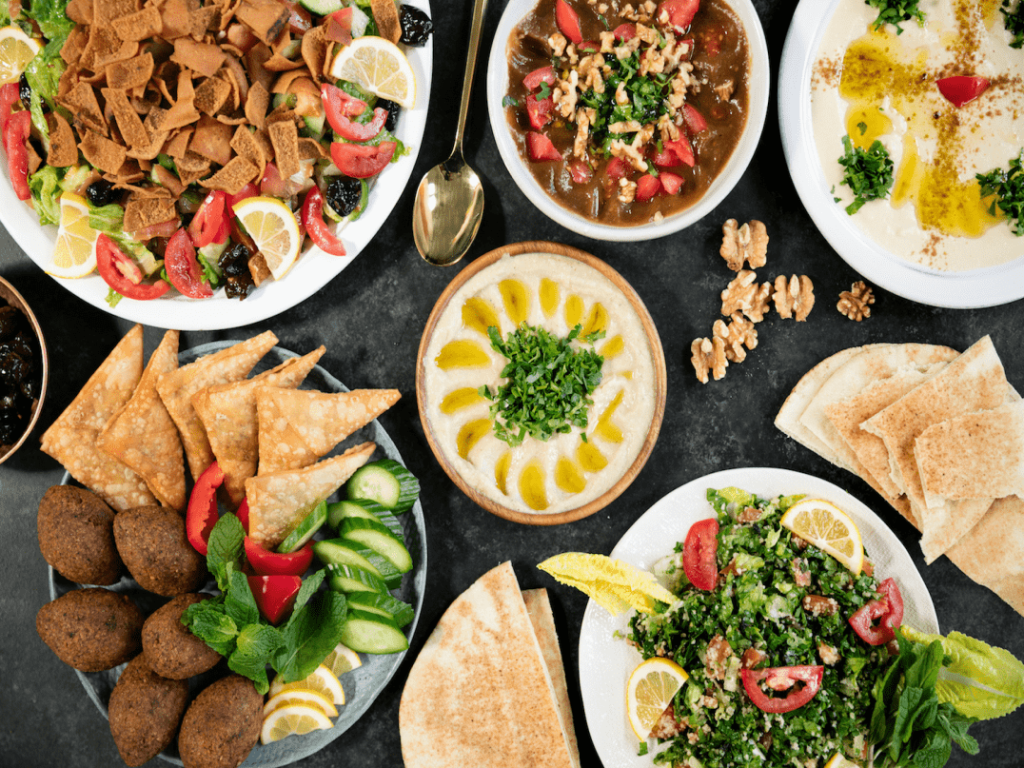Syrian cuisine is a rich mosaic of flavors, shaped by centuries of Levantine history. Exploring traditional Syrian food is an unforgettable journey for the senses. Whether you search for it as Syrian food, Syria food, Syrian dishes, or even the common misspelling Surian food, the incredible taste remains the same. Here are 10 essential dishes that capture the soul of this beloved culinary tradition.
1. Kibbeh: The Soul of Syrian Food
Often celebrated as the national dish of Syria, Kibbeh is a textural and flavorful masterpiece. It’s crafted from a paste of fine bulgur wheat and ground meat, seasoned with aromatic spices. Its remarkable versatility is a hallmark of Syrian cuisine:
- Kibbeh Nayyeh: A delicate, raw version served as a mezze.
- Fried Kibbeh: Crispy, football-shaped croquettes filled with spiced meat and pine nuts.
- Kibbeh bil Sanieh: A comforting baked dish with layers of the kibbeh mixture and filling.
- Kibbeh Labanieh: Tender kibbeh balls gently simmered in a warm, tangy yogurt sauce.
2. Maqluba: The Spectacular Upside-Down Dish
“Maqluba” literally means “upside-down,” which perfectly describes this show-stopping dish. It features layers of rice, meat (typically chicken or lamb), and fried vegetables like eggplant and cauliflower, all cooked in a single pot. For serving, it’s dramatically inverted onto a platter, creating a stunning culinary centerpiece.
3. Sheikh Al-Mahshi: The King of Stuffed Vegetables
A truly royal dish, Sheikh Al-Mahshi translates to “the king of stuffed dishes.” Small zucchini or eggplants are hollowed out, filled with a savory mixture of seasoned minced meat and nuts, and then cooked to perfection in a rich tomato or creamy yogurt sauce.
4. Shawarma: The Ultimate Street Food Icon
A beloved staple across the region, Syrian Shawarma is a flavor powerhouse. Thinly sliced, marinated chicken or beef is stacked on a vertical rotisserie and slow-roasted for hours. The juicy meat is then shaved off and served in warm flatbread with crisp vegetables and a generous drizzle of tahini or garlic sauce.
5. Yabrak (Stuffed Grape Leaves): Delicate Parcels of Joy
Yabrak are tender grape leaves meticulously filled with a mixture of seasoned rice and minced meat. These small parcels are then slowly simmered in a bright, tangy broth of lemon juice and water until they are incredibly tender. This is a classic example of a traditional Syrian food that requires patience and love.
6. Shish Barak: Delicate Dumplings in a Creamy Embrace
Often described as Middle Eastern dumplings, Shish Barak are delicate, pillowy parcels filled with spiced minced meat. They are gently cooked in a warm, garlicky yogurt sauce and often garnished with mint or cilantro, making for a uniquely comforting and flavorful meal.
7. Kebab Halabi: Aleppo’s Grilled Masterpiece
Hailing from the culinary capital of Aleppo, Kebab Halabi is no ordinary kebab. These skewers of spiced ground meat, often blended with parsley and pepper paste, are grilled to smoky perfection. A famous variation includes sour cherries (Kebab Karaz), offering a spectacular sweet and sour taste.
8. Fatteh: A Symphony of Textures
Fatteh is the ultimate comfort food, showcasing a brilliant layering of textures and flavors. The base consists of toasted or fried pita bread, which is then topped with warm chickpeas, a cool and creamy garlic-yogurt sauce, and a final flourish of toasted nuts and sizzling butter. Variations can include chicken, beef, or eggplant.
9. Mujaddara: The Humble Vegetarian Gem
Deceptively simple yet profoundly satisfying, Mujaddara is a cornerstone of home-style Syrian dishes. This hearty vegetarian dish is made with lentils and rice or bulgur, but its crowning glory is a generous topping of deeply caramelized, crispy fried onions, which provide a sweet and savory depth of flavor
10. Bamieh: Okra and Lamb Stew
A rich and savory stew, Bamieh features tender okra cooked in a tangy tomato and garlic sauce, often with succulent pieces of lamb or beef. The dish is slow-simmered until the meat is fall-apart tender and the flavors have melded beautifully. It’s typically served with vermicelli rice.
Conclusion
Exploring the world of Syrian food is an immersion into a culture built on hospitality, family, and culinary passion. From the iconic Kibbeh to the comforting Mujaddara, each of these Syrian dishes tells a story of heritage and artistry. The flavors are deeply connected to the Arabic language and its rich expressions of welcome.
To truly connect with the culture behind this incredible cuisine, immersing yourself in the language is a wonderful next step. For those inspired to deepen their cultural understanding, consider exploring the Arabic language with Kaleela.com.



